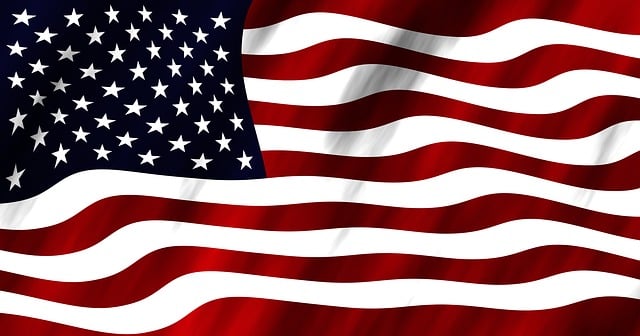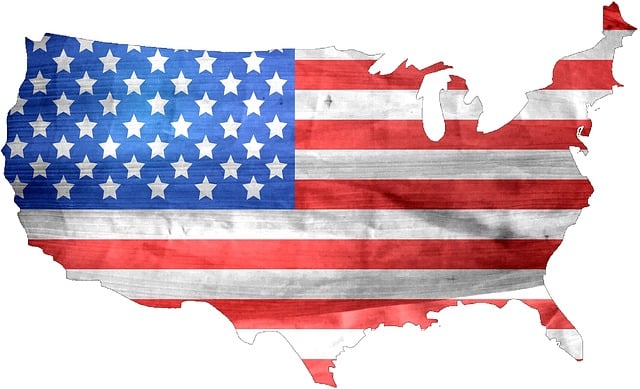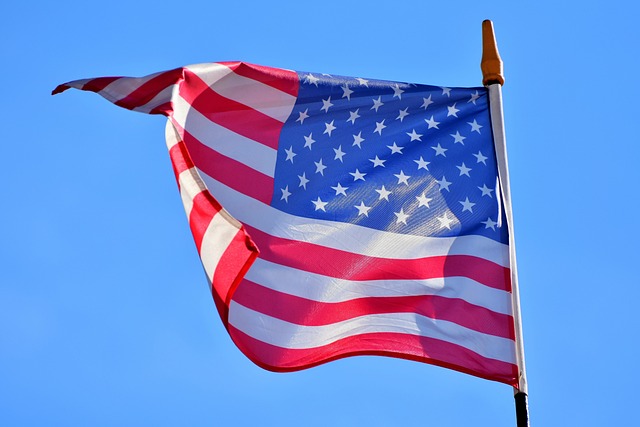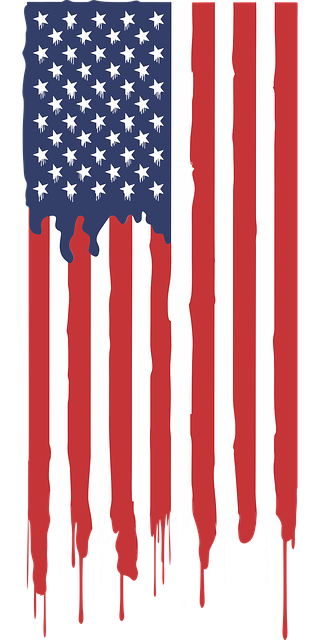The weathered American flag, with its faded stars and stripes, represents enduring freedom and national pride. This iconic symbol has evolved through historical contexts, from revolutionary battles to modern celebrations, reflecting America’s legacy of liberty. The article explores the symbolism, historical context, preservation methods, and contemporary interpretations of the weathered American Flag, delving into how it continues to inspire and honor our nation’s values.
- The Symbolism of the Weathered American Flag
- Historical Context: A Legacy of Freedom
- The Art of Preservation: Honoring the Flag
- Modern Interpretations and Their Significance
The Symbolism of the Weathered American Flag

The Weathered American Flag stands as a powerful symbol of enduring freedom and resilience in the face of time and adversity. Its faded stars and stripes, worn by the elements, reflect the history and sacrifices that have shaped the nation. Each crease and tear tells a story—a narrative of protests, battles won, and communities united under its hallowed fabric. The flag’s perseverance against wind, rain, and sun serves as a poignant reminder of America’s unyielding spirit, where freedom is not just an ideal but a lived experience, constantly evolving yet forever cherished.
This weathered emblem represents the collective journey of a nation, from its founding principles to its ongoing fight for equality and justice. It hangs in schools, cities, and homes, instilling pride and a sense of shared purpose among citizens. The simple act of raising or displaying this flag is a profound gesture—a testament to the idea that freedom is not only a right but a duty, one that requires constant vigilance and celebration. Its symbolism transcends political boundaries, uniting Americans in their devotion to the ideals it represents.
Historical Context: A Legacy of Freedom

The Weathered American Flag stands tall as a symbol of our nation’s enduring freedom, reflecting a rich historical tapestry woven with the threads of courage and resilience. Throughout America’s journey, this iconic banner has been more than just cloth and paint; it embodies the collective struggle for liberty and justice that defines our character as a people.
From the revolutionary fervor of our forefathers to the civil rights movements of the past century, each ripple in the flag’s fabric tells a story of sacrifice and perseverance. It is a testament to the unwavering spirit of Americans who have fought, bled, and died for the principles inscribed upon it—a promise of life, liberty, and the pursuit of happiness. As we gaze upon its faded stripes and tattered stars, let us remember that this weathered symbol represents not just a piece of cloth, but the legacy of freedom that continues to inspire generations.
The Art of Preservation: Honoring the Flag

The weathered American Flag, tattered by time and elements, serves as a powerful symbol of enduring freedom. Its preservation is an art that goes beyond mere physical restoration; it’s a testament to our nation’s commitment to the ideals it represents. Each rip, stain, and frayed edge tells a story—a narrative of courage, sacrifice, and resilience. These flags, having flown proudly through storms and celebrated victories, become historical artifacts, woven into the tapestry of American history.
Honoring the preservation of these flags is not just about maintaining fabric and stitching; it’s about passing down a legacy. They are reminders that freedom isn’t static but requires constant vigilance. The art of preserving a weathered flag involves more than cleaning and mending; it includes storytelling, ensuring its history resonates through generations. This act of reverence keeps alive the spirit of those who fought for our liberties, making each tattered flag a living monument to American freedom.
Modern Interpretations and Their Significance

In contemporary times, the weathered American Flag has evolved from a mere symbol of national identity to a powerful representation of enduring freedom and resilience. Modern interpretations often showcase the flag in diverse, urban settings, where its red, white, and blue hues stand out against gritty backdrops—a stark contrast to its traditional display on polished parade grounds. This shift symbolizes America’s adaptability and its unwavering commitment to liberty in an ever-changing world.
The significance of these modern portrayals lies in their ability to connect with contemporary audiences, especially those who may not have direct personal links to historical events. The weathered flag becomes a universal symbol, reminding folks of the sacrifices made for freedom and encouraging discussions about preserving these values in the face of modern challenges.
